Review for Freedom Special Edition Blu-ray Box Set
Introduction
I’ve had the worst possible luck with the Freedom OVA series on home video. I’ve always wanted it in my collection, ever since I heard about the over-priced Bandai/Honneamise HD release, one of the earliest Blu-ray anime releases back in 2008, and coincidentally one of the last HD-DVD releases too, putting the nail in that particular coffin. It also got a brief UK release in that BD format thanks to Beez. After all, it’s a sci-fi show that Katsuhiro Otomo (Akira) had a hand in, and also the most extravagant cup noodle advert ever made. I didn’t jump on the HD bandwagon until a few years after that, by which point the Bandai release was rare and over-priced, and the Beez release had long since vanished.
Then in 2011, Manga Entertainment rescued it, and re-released it, squeezing 4 Blu-rays worth of content onto just one disc. It wouldn’t have been too bad, were it not for the audio being badly out of sync on two episodes. I tried the DVD release. It had a horrible jerky transfer that made the show unwatchable on anything other than the smallest TV screen you could find. They don’t really make small TVs anymore. I then imported the Australian Blu-ray. Surely Madman Entertainment couldn’t screw up the transfer. Only they used Manga’s disc for their own release. Then in 2017, Eastern Star in the US rescued and re-released the show there. Only the Blu-ray was locked to Region A.
Finally, last year Right Stuf decided to clear out their stock of the original Bandai/Honneamise boxset, and dropped the price to a genuine bargain level, almost one tenth the original R.R.P. I guess good things do finally come to those who wait!
Man was about to embark on his grandest adventure, having left the confines of Earth, established bases in orbit and on the Moon, and about to terraform Mars. Then in 2101, the Freeport space station fell from orbit, crashing into Earth, devastating the environment and wrecking the climate. The people that survived the accident practically wiped each other out in the subsequent wars, fighting over what few resources remained. The terraforming project was abandoned, and man retreated to the far side of the moon, where the Eden base was. Since then it has become the last surviving bastion of mankind, millions of inhabitants living and prospering peacefully in carefully regulated domes, following constructive, organised, and carefully regulated lives.
That’s the ideal of course, but for some in the 23rd Century, such strictures are a little too stifling, and as usual it’s the teenagers. Takeru wants to race bikes in order to impress girls, and with his friends Kazuma and Bismarck, he’s souping up a battered old tricycle to take on his archrival Taira. Of course over-exuberance gets him into trouble, and he winds up doing community service outside the domes. He happens to be there when what looks like a meteorite impacts nearby, but examining it he finds a collection of manmade objects, a message in a bottle, a picture of a girl and a couple of lines stating that Earth is safe, and asking if anyone is out there. The government of Eden has been lying to them. To learn the truth, Takeru and his friends will need a little Freedom. Fortunately there is still some in Eden, literally, a small part of the base called Freedom where those who don’t conform to societal ideals are tolerated to live. An old astronaut friend of Bismarck’s named Alan runs the settlement, and he may know how to get the boys to a world that everyone has been telling them has been dead for a hundred years.
All seven episodes of Freedom are presented across 4 Blu-ray discs from Bandai/Honneamise. You got two episodes apiece on the first three discs, and the double length final episode gets a disc all to itself.
Picture
Freedom gets a 1080p 1.78:1 widescreen transfer. Just like with the Manga disc, I did notice some digital banding and aliasing around fine detail. There was some nauseating shimmer around a vertical pan in the prologue, but thereafter it was only the finest of line detail that would suffer aliasing. The anime itself is stupendous quite frankly. It takes a leaf from films like Vexille and Appleseed and delivers computer generated, cel shaded characters, but Freedom’s cel shaded characters blows those of the other films away. It’s because they adhere much more closely to the anime style, look more like traditional 2D characters, and you see that the CG animation has really only been used to get them moving and interacting with their environments. Otherwise, this may as well be a traditional 2D animation. The character designs may be traditional, but the richness and complexity of the world design is astounding. Freedom offers a lived in, appealing and very tactile universe. Its technological creations and environments may be simple, but somewhat perversely, this makes them feel more real. It’s because they help you forget the technicalities of the animation and let you appreciate the story.
The average video bitrate is twice that of the Manga disc, but there really isn’t more than a cigarette paper between the Manga and Bandai releases when it comes to perceived video quality.
Sound
Lossless audio! This is probably the biggest difference (aside from size) compared to the Manga release. That only had two DTS audio tracks, but the original release from Bandai/Beez has three audio tracks, all Dolby TrueHD 5.1 Surround, in English, French, and Japanese, with optional English and French subtitles. I went with the Japanese, and it sounds great, rich and resonant, making full use of the surround soundstage, and offering teeth loosening LFE when the show demands. The dialogue is clear throughout, and the subtitles are accurately timed and free of typos. Most importantly, the audio remains in sync throughout.
Extras
You have 4 discs with text heavy labels, and with the BBFC logos as required by Beez back in the day. Each disc gets its own black BD Amaray case. The artbox is pretty nifty, a semi clear plastic with white text, and a black obi-band with the blurb on. Into the plastic goes a piece of fold-out card with some gorgeous comic-art on, and inside all this go the Blu-ray cases.
As well as the Blu-rays, you also get a mini-manga, offering some more Freedom story called Just Short Of Heaven’s Gate. The comic text is in English, but there are French and Japanese translations in the margins.
The whole thing comes wrapped in a clear plastic wrapper, but this is the kind of heavy duty, folded plastic that you’re tempted to keep the collection in for added protection, rather than throw into the rubbish like thin heat-shrunk cellophane.
The discs present their content with static menus. On insertion, you have the choice between Japanese, French, and English menu screens, and your choice will determine which language credits the episodes get as well, and the episodes will autoplay in that language. You’ll have to escape to the main menu (or use the pop-up) to access extras and audio options.
Disc 1
Here you get the Introduction Trailer (1:14), the Freedom 1 and 2 Digests (1:31 each), Another Vehicle Race (1:09), and the Nissin Cup Noodle TV Commercial Digest (1:31).
The big extra on the disc is the Talking About Freedom Session 1 which lasts 17:28 with director Shuhei Morita, series planner Dai Sato, and scenario support Gichi Ohtsuka interviewed.
The Digests are in 1080p format, all other extras are in 1080i 60Hz.
Disc 2
This time you have the Freedom 3 & 4 Digests, again 1:31 apiece.
You also have the Talking About Freedom Session 2, a continuation of the previous featurette running to 21:07.
Disc 3
The Freedom 5 & 6 Digests unsurprisingly run to 1:31 each.
Freedom in the USA Part 1 lasts 10:56, and Part 2 lasts 13:26 and they see Dai Sato and Shuhei Morita travelling around the US for the 2007 Anime Expo.
Disc 4
One final Freedom 7 Digest running to 1:31, Freedom: The Hope lasts 1:37; you get 9:24 of Next Episode Trailers, and 2:00 of Messages From the Characters.
The two substantial featurettes on this disc are The Apollo’s Journey (10:01), and From Apollo to Freedom (14:01), which look at the space race, with emphasis on the Apollo programme.
Conclusion
Freedom is a classic sci-fi tale, albeit one subsidised heavily by product placement. You have to train your brains to accept cup noodles in every other shot, and that despite the story’s insistence that the Earth and the Moon have been isolated from each other for over a hundred years, that the same company is still selling its hot water snack on both worlds. Little things like that would be called plot-holes in another reality, but here it’s just advertising. After all, it was the thirtieth birthday of the snack manufacturer that financed this OVA series, gathering the best and brightest in the anime business to create an epic anime show. After all, character design from Katsuhiro Otomo, writers like Dai Sato, studio Sunrise behind the visuals, and a catchy theme song from Hikaru Utada, Freedom is the cream of the crop when it comes to production values and scope.
It’s hardly an original set up though. Catastrophe and war destroys the Earth, with mankind surviving only on a lunar base, set up using the technology that was meant to be used to terraform Mars, for which the original base was meant to be a waystation. For the last hundred years, the people of Eden have been living strictly regimented and controlled lives, conforming to an ideal society, burdened by the knowledge that they are the last humans in the universe, and it’s down to them to keep history alive. Of course against such strictures, some will rebel, and as usual it’s the teenagers, so Eden has something of a safety valve for them to let off steam, a little organised rebellion that if it goes too far is punished by community service.
In true James Dean style, it’s all about speed, about being reckless, and about racing. Takeru’s the young boy who is trying to impress a girl by building a fast bike, and gazing up wistfully at the dead Earth (which in true Truman Show style is actually an image projected on the roof of the dome, as Eden is actually on the far side of the moon). It’s when he gets punished for one of his transgressions with community service, working outside of the dome, that he learns that Eden has been lying to him, lying to them all. He finds a message in a bottle, the remains of a capsule that he witnesses impacting with the lunar surface, a few fragments of seashell, and a photo, a greeting from Earth. For the Eden government, it’s a threat to their utopia, and a truth that must be stifled. For Takeru, who has instantly fallen in love with the girl in the photo, the teenage rebellion becomes real, as he decides that the truth has to be known, and that he needs to go to Earth to find out what really happened.
Secrets and lies, teenage rebellion against authority, and a whole bunch of sci-fi concepts and ideas that really appeal, make up Freedom. We follow Takeru and his friends on their quest to uncover the truth, which with the aid of the old astronaut Alan actually gets them as far as Earth itself. For the lunar visitors, it’s like exploring an alien world, no dome, scary weather, weird animals, and even weirder humans. What starts off as an act of teenage defiance of authority, becomes a quest to reunite two worlds, the sundered halves of humanity, and by doing so bring back hope and ambition to both Earth and the Moon. But there’s resistance to change on both worlds.
The story in Freedom is great; it’s the sort of classic, sci-fi escapade that I grew up on, devouring novels like it from my local library. Its twists and turns, surprises and secrets do much to hold the attention. If that isn’t enough, the animation is excellent, with the world design living up to the epic nature of the story, and the action sequences really appeal. The characters are fairly generic though, and their narrative journeys aren’t exactly deep or meaningful. The teenagers act like typical teenagers, the authority figures are suitably draconian, the quirkier characters serve as comic relief, it’s all pretty standard for an anime story. The downside is the length of the show, which at just seven episodes, eight if you count the final one as two, just hasn’t the space to properly develop the characters and tell its story at the same time. Key events have to be hit on schedule, and if subtler little character moments fall by the wayside as a result, then so be it. Freedom would have worked much better as a full length story, or maybe even as a thirteen episode series, to properly develop the characters and show their growth and the adversities they face. Too often, important potential storyline was glossed over by a ‘2-years later’ caption.
It’s amazing how much more you can enjoy a series if you’re not being distracted by a dodgy transfer, or seething at out of sync audio. The Bandai release of Freedom is flawless to all intents and purposes. Your sole concern here is enjoying the content, and this classic mode of sci-fi is brilliant. This time around, I even found fewer nits to pick with the shorter runtime and comparative lack of character development. The story just zips along, drawing the viewer in, and having fun with its adventure antics. The window of opportunity to pick up one of these Bandai sets might have closed now, but if you happen to find one crop up at retail, or someone’s silly enough to part with one second-hand, don’t hesitate to snap it up.
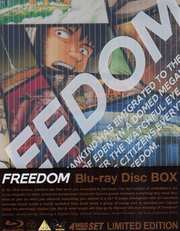



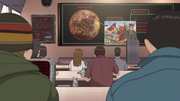

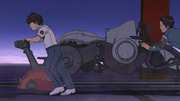









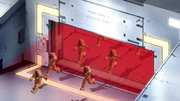

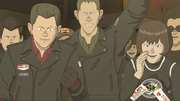





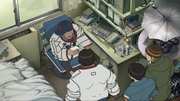

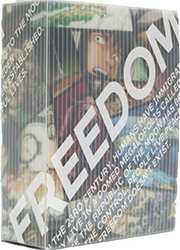
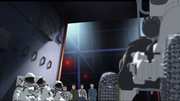


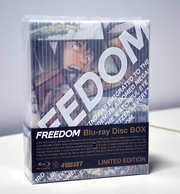
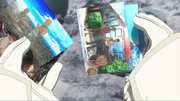






































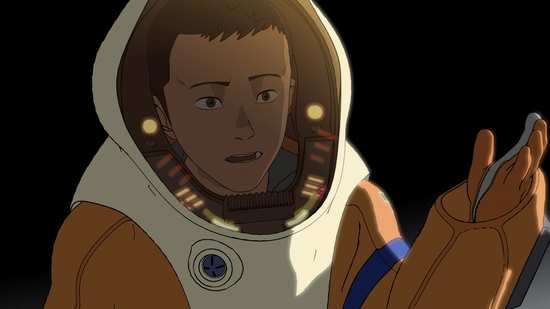











Your Opinions and Comments
Be the first to post a comment!